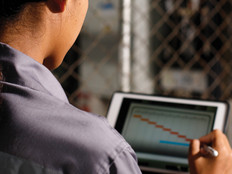Digital Signage Growth Helps K–12 Schools Get Their Messages Out
Cluttered bulletin boards, garbled loudspeaker announcements and missed memos are becoming a thing of the past as a growing number of schools turn to digital signage. The tools make communicating with students, staff and parents easier, more effective and even less expensive.
A recent report from Technavio found that revenue from digital signage in the education market is expected to grow 10 percent by 2021.
SIGN UP: Get more news from the EdTech newsletter in your inbox every two weeks!
How Schools Use Digital Signage
Technavio analyst Jhansi Mary J says schools are finding plenty of uses for digital signage at an affordable price tag, including:
- welcome messages and videos during events
- notifications about curriculum, assessments and emergency situations during regular school hours
- time-bound dayparting information
- different messages for specific audiences on a school campus (e.g., lunch menus near the cafeteria, building directories in the main entrance and announcements in hallways)
Apart from these factors, Jhansi also says, “Digital signage displays add to the aesthetic appeal of the campus as they declutter hallways and corridors from bulletin boards and posters.”
Tackling District Communication Challenges
Klein ISD, one of the fastest-growing districts in Houston, recently adopted 50 large-format TVs for digital signage as part of a three-year technology growth plan.
Chris Cummings, director of IT for Klein ISD, says with the scale and pace of a growing district, finding effective ways to communicate can be difficult, but digital signage is helping the district tackle that challenge.
“Whether it is helping students stay informed of upcoming events and deadlines or creating student ownership and loyalty to the campus, schools use the signage to share important information, schedule updates or even promote student successes,” says Cummings.
He also says the flexibility of digital signage creates time and cost savings for the district: “Campuses enjoy being able to brand and share their content for the entire school to see without having to print paper. This saves considerable time and money. They can promote activities to students while using the same technology to guide parents to the corresponding events.”
Looking forward, Cummings says, the district hopes to leverage digital signage for safety purposes as well. “As we integrate solutions and centralize management, getting critical information to a large student body in a timely manner will become possible. This guarantees the necessity and importance of digital signage in our campuses,” says Cummings.
Mobile Integration Engages Digital Natives
Digital signage also offers mobile integration, so schools can push information to devices like smartphones. (This also lets staff use mobile devices to update, operate and monitor digital signage systems.)
That’s a major boost in a school’s ability to communicate effectively with both parents and digital natives when you consider the large-scale adoption of mobile devices both inside and outside the classroom.
In a nationally representative survey released in 2015, the last time this data was made available, education publisher Pearson found that 53 percent of 4th and 5th graders, 66 percent of middle schoolers, and 82 percent of high school students regularly used a smartphone.
Add to that findings from a Pew Research Center report that show 77 percent of US adults own a smartphone, and it’s clear that connecting digital signage with mobile devices is an effective way for schools to get their messages out.
As Technavio’s Jhansi puts it, “Delivering the same content to the users' devices can further accelerate connectedness.”








